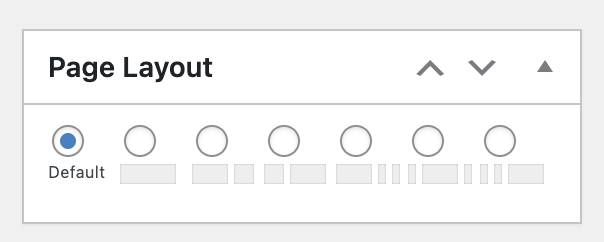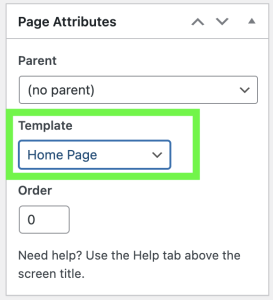Creating a new page
To create a new page, click on the Add New option under Pages from the sidebar(Pages > Add New).
Read further to learn more about the options you will find in the “Add New” Page.
‘Add New Page’ Screen
The “Add New Page” screen will have options like;
Title
The title of your page. You can use any words or phrases. Avoid using the same title twice as that will cause problems. You can use commas, apostrophes, quotes, hyphens/dashes, and other typical symbols in the page like “About My Site – Here’s Lookin’ at You, Kid.” WordPress will clean it up for the link to the page, called the slug.
Page Editing Area
The blank box where you enter your writing, links, links to images, and any information you want to display on your site. You can use either the Visual or the Text view to compose your pages.
Page Layout
The Page Layout box will let you customize the layout of the page while creating or editing a page by selecting one of the 6 pre-defined layout options.

Publish box
Contains buttons that control the state of your page. The main states are Published, Pending Review, and Draft.
- A Published status means the page has been published on your blog for all to see.
- Pending Review means the draft is waiting for review by an editor prior to publication.
- Draft means the page has not been published and remains a draft for you.
If you select a specific publish status and click the update page or Publish button, that status is applied to the page.
Schedule a Page
To schedule a page for publication on a future time or date, click “Edit” in the Publish area next to the words “Publish immediately”. You can also change the publish date to a date in the past to back-date pages. Change the settings to the desired time and date. You must also hit the “Publish” button when you have completed the page to publish at the desired time and date.

Visibility
This determines how your page appears to the world.
- Public pages will be visible to all website visitors once published.
- Password Protected pages are published to all, but visitors must know the password to view the page content.
- Private pages are visible only to you (and to other editors or admins within your site)
Save Draft Button
Allows you to save your page as a draft / pending review rather than immediately publishing it. To return to your drafts later, visit Pages > All Pages from dashboard, then click your page title from the list.
Publish Button
Publishes your page on the site. You can edit the time when the page is published by clicking the Edit link above the Publish button and specifying the time you want the page to be published. By default, at the time the page is first auto-saved, that will be the date and time of the page within the database.
Preview Button
Allows you to view the page before officially publishing it.
Permalink
After you save your page, the Permalink below the title shows the potential URL for the page, as long as you have permalinks enabled. (To enable permalinks, go to Settings > Permalinks.) The URL is generated from your title. The commas, quotes, apostrophes, and other non-HTML favourable characters are changed and a dash is put between each word.
For example, If your title is “CMS at UBC’s Okanagan Campus“, it will be cleaned up to be “cms-at-ubcs–okanagan-campus” as the title(Figure 1).
You can manually change this, maybe shortening it to “ubc-ok-cms”(Figure 2).
Page Attributes
Parent
Parent page controls how deep your page hierarchy goes. Parent option will not be visible if you are creating the very first page of the website.
Template
Some Themes have custom templates you can use for certain pages that might have additional features or custom layouts. If so, you’ll see them in this dropdown menu.

Order
Page order to sort the list of Pages under the parent.

